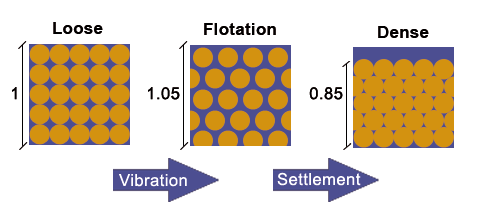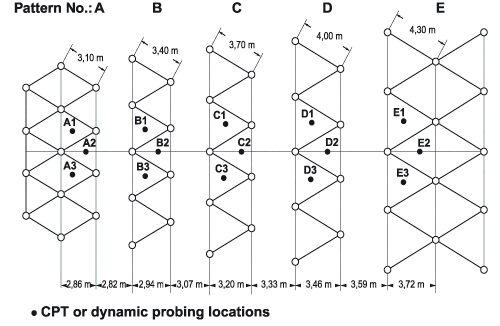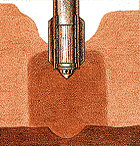Compaction of granular soils by depth vibrators is known as Vibro Compaction. The method is also known as “Vibroflotation”. Natural deposits as well as artificially reclaimed sands can be compacted to a depth of up to 70 m. The intensity of compaction can be varied to meet bearing capacity criteria. Other improvement effects such as reduction of both total and differential settlements are achieved. The risk of liquefaction in a earthquake prone area is also drastically reduced.

The following diagrams illustrate the compaction process :

The principle of sand compaction (Vibroflotation):
The compaction process consists of a flotation of the soil particles as a result of vibration, which then allows for a rearrangement of the particles into a denser state.
Effects of Compaction
• The sand and gravel particles rearrange into a denser state.
• The ratio of horizontal to vertical effective stress is increased significantly.
• The permeability of the soil is reduced 2 to 10 fold, depending on many factors.
• The friction angle typically increases by up to 8 degrees.
• Enforced settlements of the compacted soil mass are in the range of 2 % to 15 %, typically 5 %
• The stiffness modulus can be increased 2 to 4 fold.
Test Pattern
On large projects the optimal compaction grid spacing has to be determined by test grids. The compaction effect in the test grids should be as close as possible to the treatment in the later production areas. In order to achieve this it is advisable to arrange the test grids close to each other. The distance between grid A (3.10 m) and grid B (3.40 m) should be
Test Pattern

Penetration

The vibroprobe penetrates to the required depth by vibration and jetting action of water and/or air.
Compaction

The vibroprobe is retracted in 0.5 m intervals. The in situ sand or gravel is flowing towards the vibroprobe.
Completion

After compaction, the working platform needs to be leveled and eventually, roller compacted.
